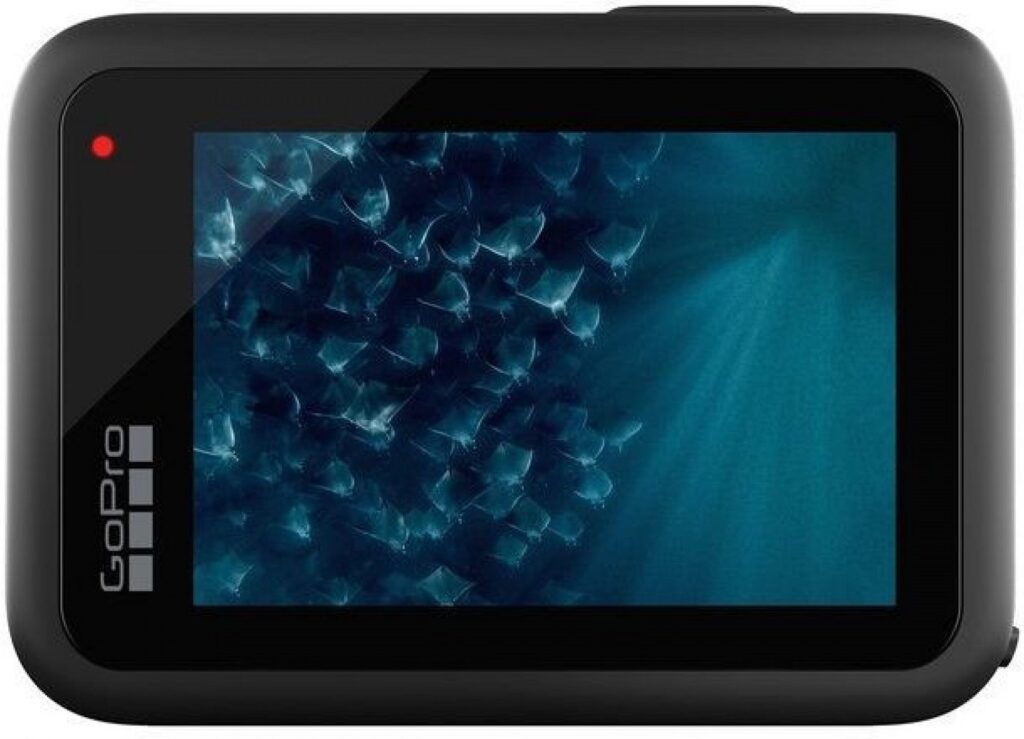Quick Summary
The outdoor digital camera delivers incredible speed and image quality from the powerful GP2 processor and larger image sensor.
The outdoor digital camera delivers incredible speed and image quality from the powerful GP2 processor and larger image sensor.
In the past, GoPro products have become synonymous with durable action cameras you can rely on. The GoPro HERO 11 reviewed here may not seem to offer much extra over the previous generation, but the opposite is true. In January 2023, it was the best outdoor action camera on the market.

The sensor has a newly increased resolution, namely 5.3K. So there is plenty of room for additional cropping in post-production. The camera can handle resolutions of up to 27 MPx, whereas the HERO 10 managed a maximum of 23 MPx. However, we would like to add that megapixels are not the most important criterion for the quality of a photo. The camera has received a new image processor, which helps to produce significantly better results.
Not only does the resulting image have a greater depth of colour, but it also performs better in the dark. The “colour science” has also evolved, with colour reproduction being less saturated, less green and a more realistic overall impression. The predecessor of this model worked with video at 5K resolution at a maximum frame rate of 60 FPS. The GoPro HERO 11 can handle same frame rates. So you can expect to see 5.3K/60 FPS or 4K/120 FPS video. Likewise, 2.7K shooting can do 240 FPS.
The camera body is traditionally waterproof up to 10 meters and is really reliable. The lens cover glass now has a hydrophobic coating. Water doesn’t stick to it, so you won’t get distracting drops on the glass when shooting near water. However, the lens hood can also be purchased for the HERO 11, so from that perspective, it will suit the older model as well. The camera shares most of the other specs with it, including size, design, weight and battery capacity. The latter drains a little faster due to the higher power.
The display on the back still spans the same 2.27-inch diagonal. On the front, the camera is complemented by a second smaller 1.4-inch display for the purpose of shooting selfie videos. The device will allow connectivity via USB, but also wirelessly via Wi-Fi. A Media Mod can also be purchased from the manufacturer, which will allow the connection of an HDMI cable. The camera weighs 158 grams, which is more than competing models. However, it offers significantly better equipment and cannot be considered heavy.
As part of our research, we also focus on user and expert reviews of selected products. Experts rate the GoPro HERO10 Black very positively. Among the pros, they mention in particular the double frame rate, with which the camera can work at higher resolutions, as well as faster recording thanks to the new image processor. The criticisms are directed solely at the higher price and shorter battery life.
Users are a bit more critical, but not all comments can be considered valid. Among the negatives, for example, comments can be found towards the difficulty of opening the battery cover. However, this is directly related to the waterproofing and is thus a feature that cannot be considered a negative. On the other hand, the fact that the camera overheats and may shut down when recording for longer periods of tens of minutes can be considered a valid comment. This is generally true for all isolated action cameras.
On the other hand, reviewers praise the excellent image quality, well-functioning stabilisation and wide range of optional accessories. In addition, at 2.7K resolution, a frame rate of 240 FPS is available, so the image can be slowed down four times for computer monitor purposes while maintaining smooth playback. If you’re targeting the classic 24 FPS TV format, then you can slow the footage down up to ten times in post-production.